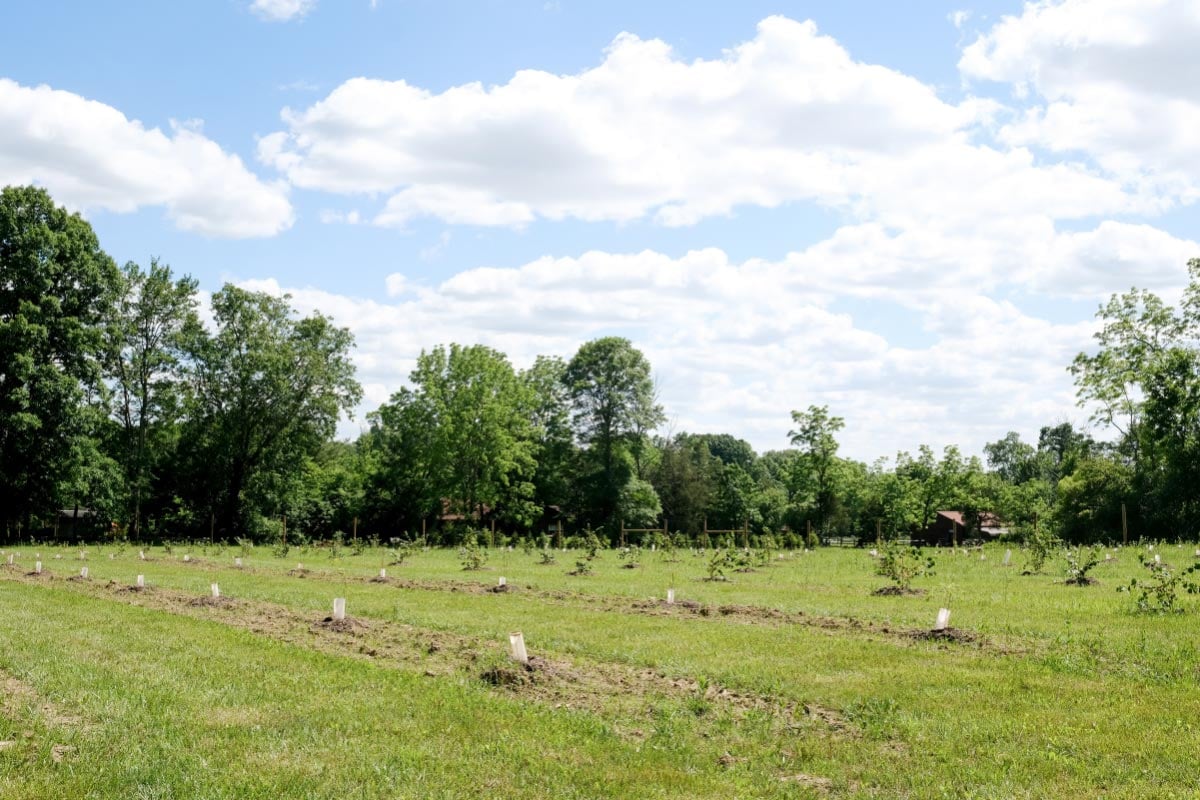
History and healing converge in a chestnut tree farm.
"...care for the soil as you would a loved one."
In the 200-year-old springhouse at Bloom Farm, a steady flow of water streams into a trough like a miniature waterfall. The water comes from deep in the surrounding limestone hills, flowing steadily at 40 degrees Fahrenheit just as it has for centuries—a constant force of nature threading through time.
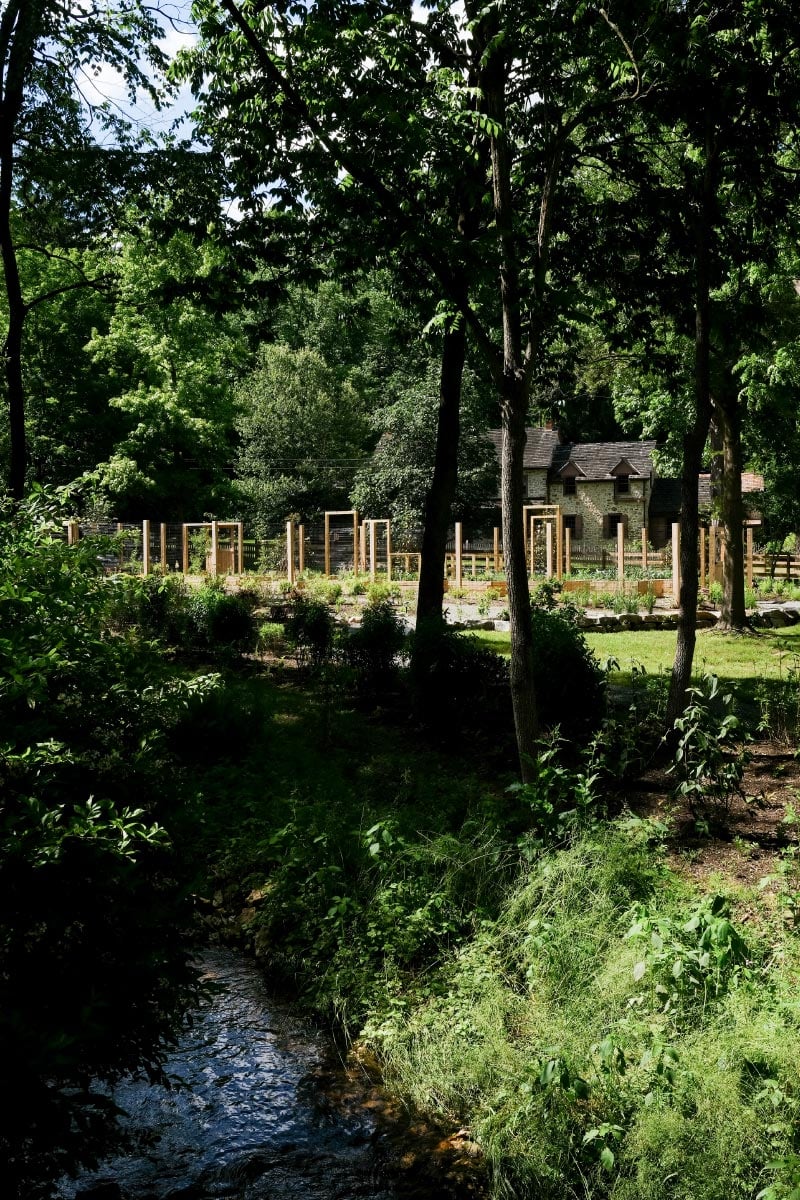
Like that streaming groundwater, a deep sense of history flows through the farm, history that's not lost on founding partner Sam Nana-Sinkam: “The dense history gives me a deep reverence for the land,” he says. He purchased the 60-acre Oley property early in 2023, driven by a dream of bringing chestnut trees back to the East Coast.
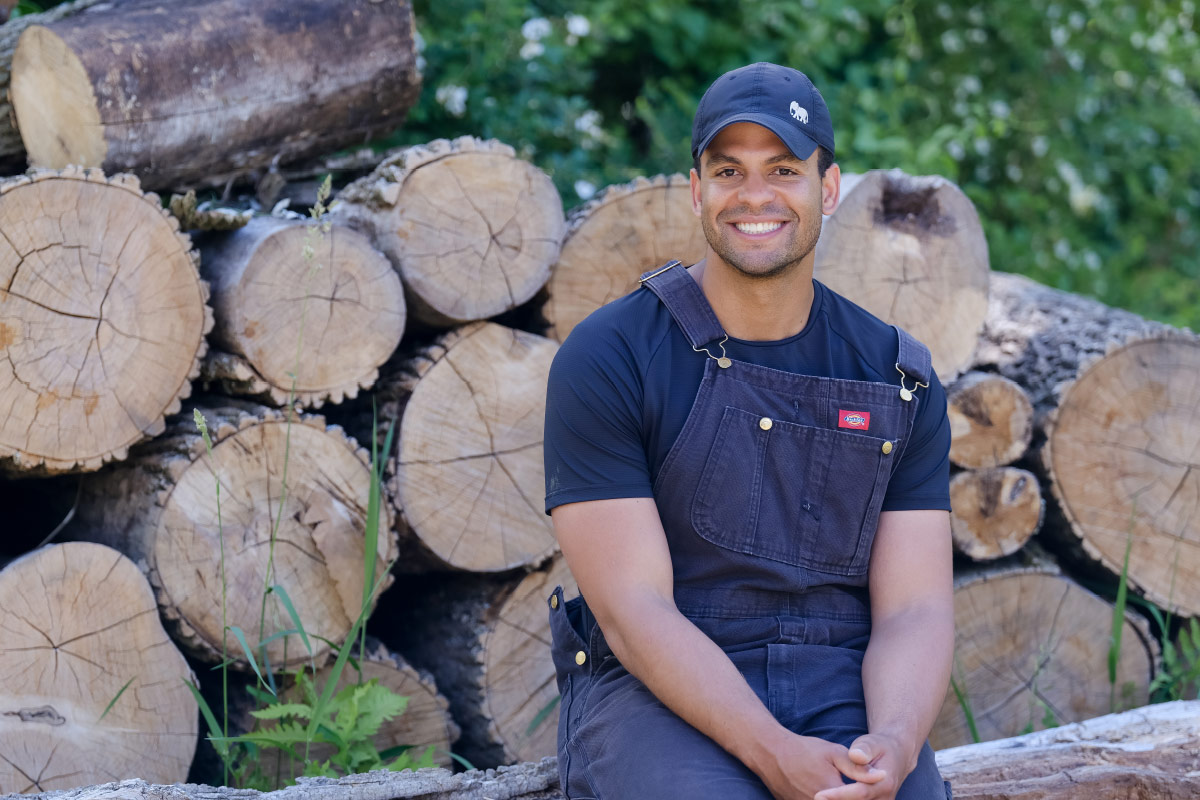
That reverence is demonstrated in his commitment to caring for the land with regenerative agricultural practices that heal and sustain the soil. But it's also apparent in his vision of harnessing the natural beauty of the peaceful, bucolic setting to create a place of healing and sanctuary.
Why chestnut trees? In 2020, the importance of family and the fragility of life consumed Nana-Sinkam's thoughts following a traumatic brain injury sustained by his father-in-law. When COVID hit, fraught with its supply-chain shortages, Nana-Sinkam wondered how he would feed his family should another pandemic occur.
In the midst of these events changing the landscape of his life, he realized gardening was helping his anxiety. Planting, weeding and harvesting were releasing the trauma that was testing life as he had known it.
Then he read an article about the demise of the American chestnut tree and “fell in love with this story about a once-great crop.” After several years of dreaming about establishing a chestnut tree orchard and a year of searching for properties, he followed a Zillow listing to Berks County. “Awestruck” when he first saw what is now Bloom Farm, he knew it was the right place for his dream to take root.
That's the short story behind how a former New York City Google staffer, who planned digital advertising systems and worked in the tech sector for 15 years, became a rural Pennsylvania farmer who plans agricultural systems that nurture healthy soil.
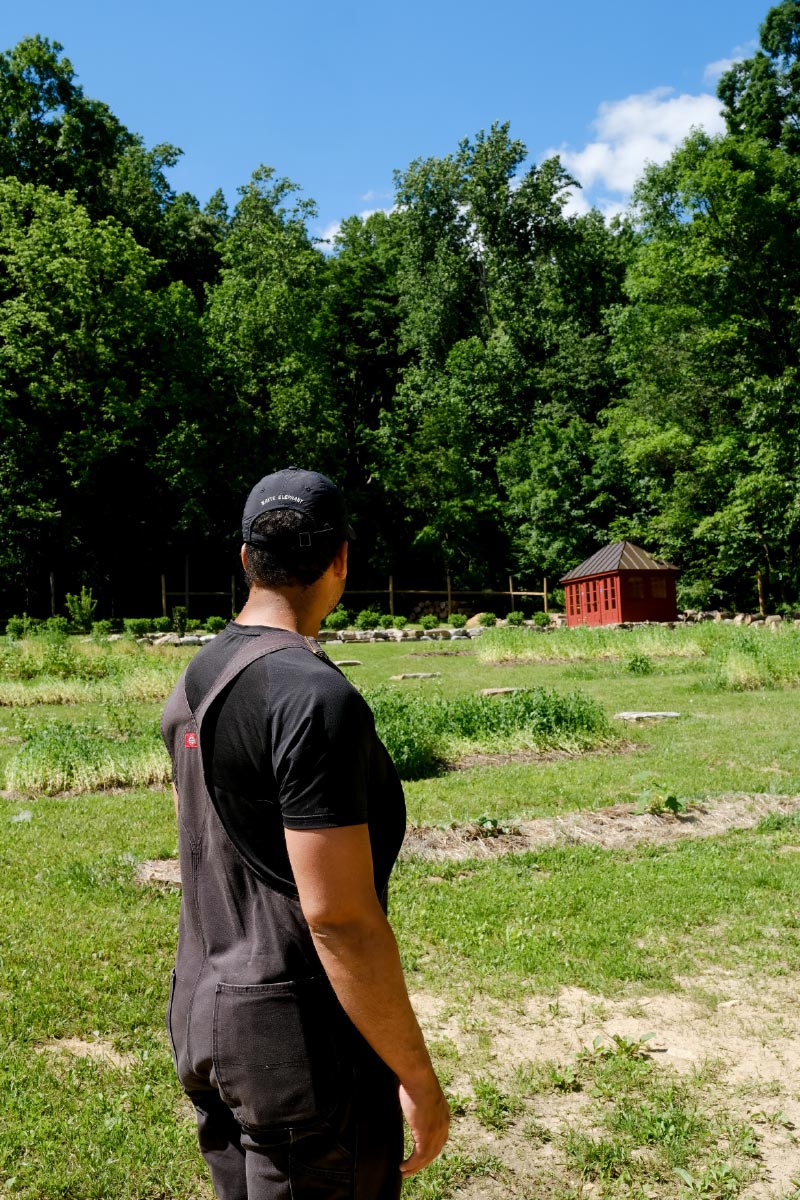
Earlier this year, volunteers and farm staff along with teams from Propagate, Trees For Graziers, and the Rodale Institute—farm and agroforestry planning partners—planted 1,400 chestnut trees. Propagate helped the farm source different varieties with the best chestnut genetics available. Also planted were a few experimental American chestnuts along with diversity bands of 200 trees such as beech, dogwood and hickory, and 50 hazelnut trees.
Nana-Sinkam says it will take five to seven years for the chestnut trees to mature and bear their “fruit,” which can contribute chestnut milk and flour, and, consequently, bread, to the American diet. The nut can also be used as a meat substitute. Bloom Farm will sell chestnut trees like a nursery as well as sell the nuts wholesale. As the farm awaits its first crop, Nana-Sinkam hopes to develop infrastructure to make product on site, starting with installing equipment to produce chestnut flour.
Meanwhile, farm staff continue to integrate regenerative and healing practices throughout the property and its programs.
Care of the soil has been important from the start. Even before Nana-Sinkam purchased the farm, he had the soil tested. It was in “good shape,” he discovered, but repeated crops of corn and soybeans with no rotation had resulted in a potassium deficiency.
Eighteen months of regenerative agricultural practice strengthened the soil in preparation for planting the chestnut orchards. Those practices include limited disturbance of the soil, avoiding the use of chemicals, and installing berms and swales to control water runoff and soil erosion. Also, fields were planted with rye that acted like scaffolding on which more nutrients could be built, and alpacas integrated into one pasture regenerated that field with their grazing and fertilization.
These farming practices ensure that each year the soil is better than it was the year before. Nana-Sinkam says it's critical “to care for the soil as you would a loved one.”
Transforming the farm into a healing sanctuary has been critical work, too. Three newly built gardens, managed with regenerative and organic agricultural techniques, include a cocktail garden, kitchen garden and community garden that will provide the backbone of healthy meals served at retreat and dinner gatherings.
A food forest—made up of seven layers where each layer produces edible food— was also planted earlier this year. For example, 100 trees in the planting included canopy-layer varieties such as almond, beech, chestnut and hickory, and low-tree-layer varieties such as fig, pawpaw, apple, peach and pear. Blueberries were planted in the shrub layer and strawberries in the ground cover layer. Full realization of the food forest will take five years.
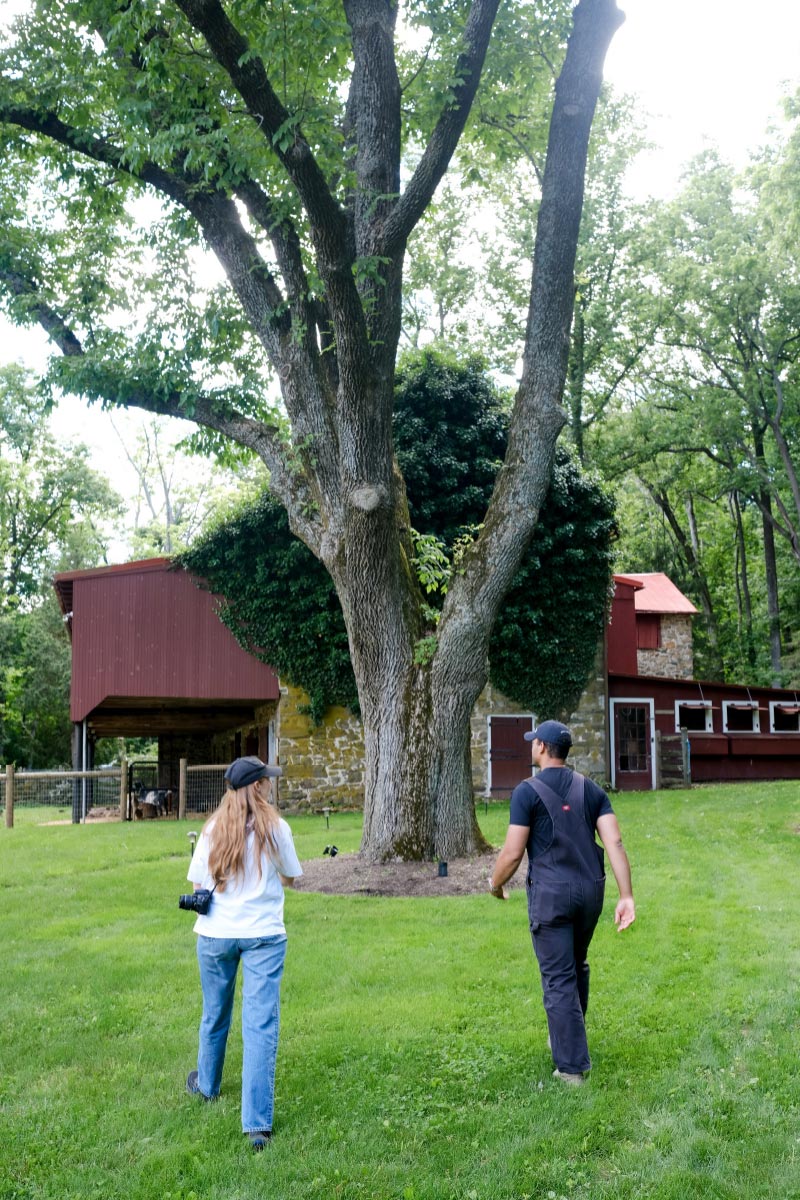
The Lost American Chestnut Tree
At one time, the American chestnut tree— its trunk diameters at 10 feet or more and its height sometimes reaching more than 100 feet—was a giant of eastern U.S. forests, stretching from southern Maine to the Florida Panhandle and west to the Mississippi River.
Between 1904 and 1940, these magnificent members of the Appalachian hardwood forest, numbering around 3.5 billion, were destroyed by a fungal blight from Asia. The tree has been virtually extinct for decades.
Squirrels, deer, raccoons and more fed on the tree's sweet, acorn-size nuts under its wide canopy. Cooper's hawks made their home in the high branches, and insects thrived in the naturally tannic craggy bark, used in preserving hides. Cherokee people crushed the nuts to make dough, brewed astringent from sprouts to dress wounds and used the tree's leaves to treat heart troubles.
An important cash crop of local farmers in the 1800s, most of the chestnuts consumed in the U.S. today are imported. Low in fat and calories in comparison with other nuts, the chestnut's nutritional profile is similar to brown rice.
Chestnuts are rich in vitamin C and antioxidants, and the leaves' essential plant nutrient levels are higher than other local species, making the tree beneficial for all levels of the food chain, not only for humans.
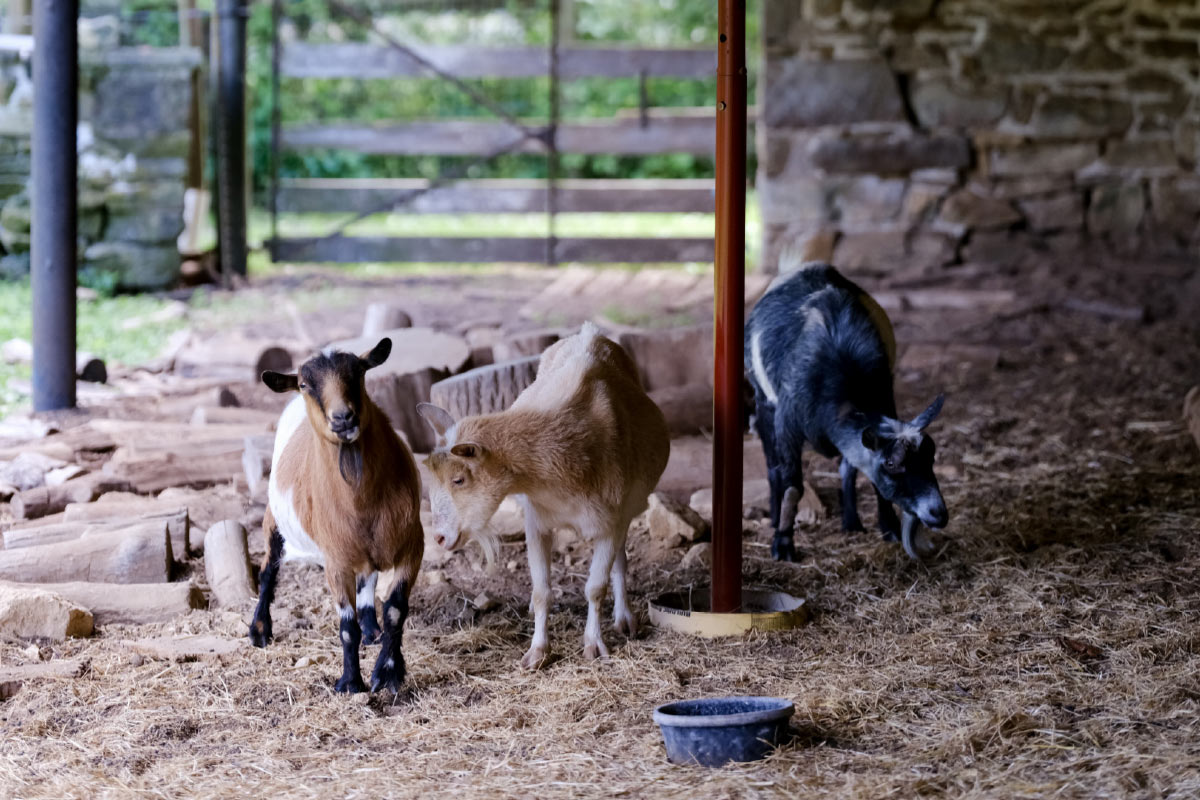
Because of its decay resistance, long life, considerable size and rapid growth, returning the chestnut tree to its former ecological role could make a significant contribution to carbon sequestration and, consequently, to the mitigation of climate change.
The American Chestnut Foundation—in partnership with the U.S. Forest Service and a number of ecologists, foresters and biologists—is working to develop a “blightresistant American chestnut tree” that can be restored to its native range across the eastern United States.
Sources: The American Chestnut Foundation, U.S. Department of Agriculture, Sierra (The Magazine of the Sierra Club)
Construction projects have included developing seven miles of paths and walkways, building a bridge over a stream with wood reclaimed from the property, and building a campground with four cabins and a bathhouse to add more housing options for guests participating in multiday events.
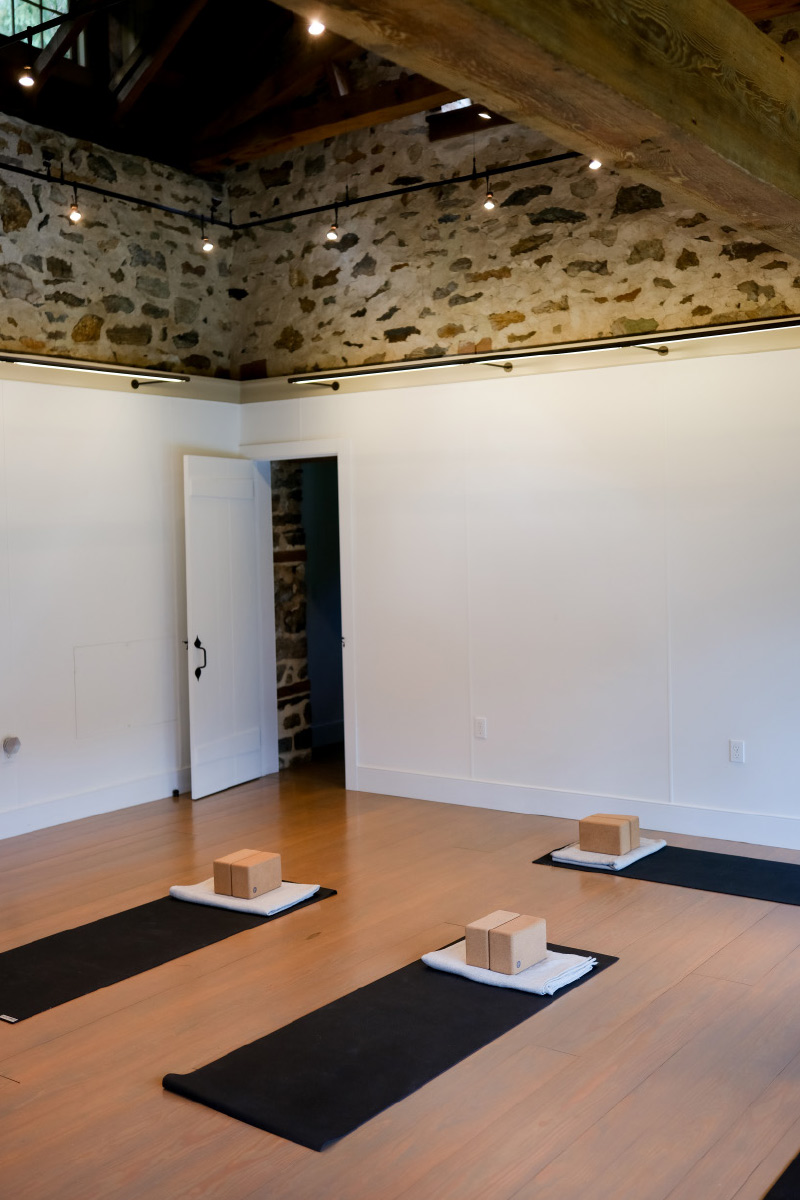
Bloom Farm's setting imparts an Impressionistic background for events and gatherings. The sprawling stone farmhouse that provides guest housing fronts the road like many built in the 1800s. Along with the springhouse, several renovated centuriesold buildings include: a former livestock barn, once home to pigs and horses, that's now a yoga and wellness studio; a tannery transformed into a wine cellar; and an 1810– 1830 barn, untouched for 80 years, now a studio for artist residencies. The 1760 summer kitchen, used by guest chefs, is still original.
Near the house, the swans Ross and Rachel glide with grace across the Kodak-moment pond and, at the barn, three goats—Glen, Arthur and Freddie—complete the pastoral, serene scene.
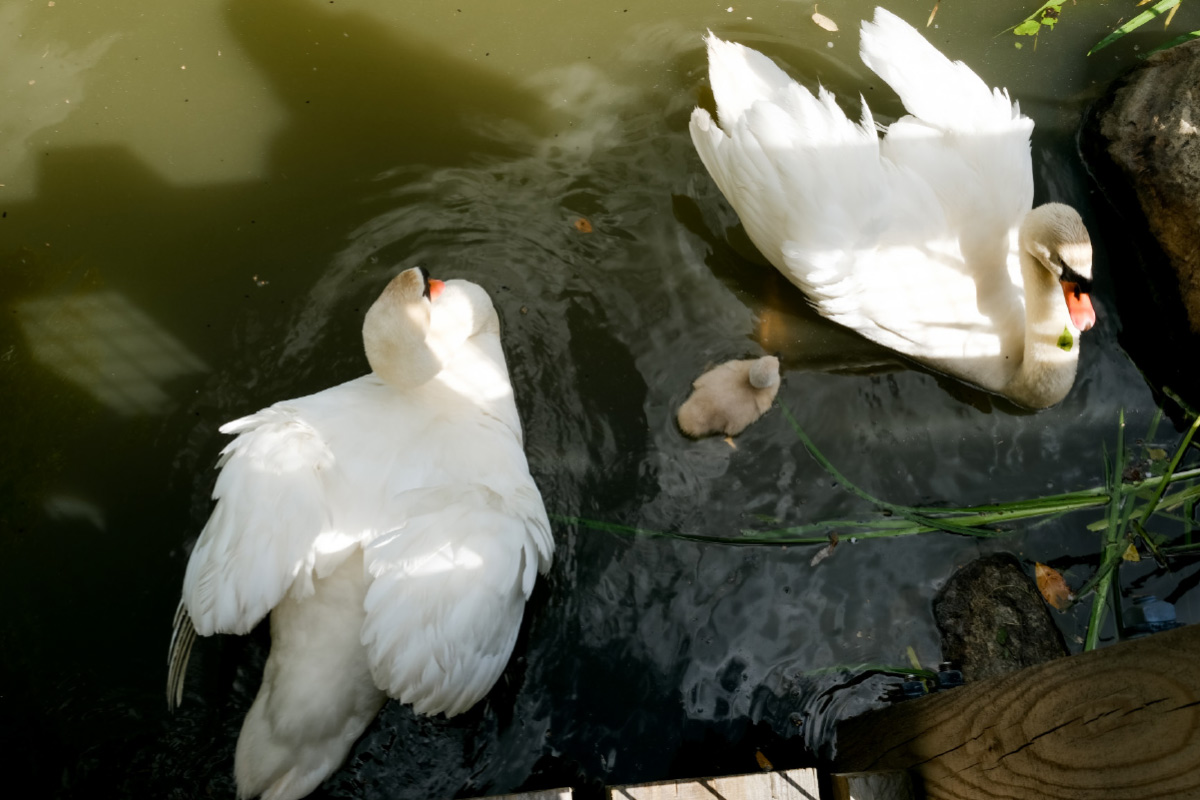
You can feel the history here. Emblazoned on the front of the farmhouse are the names of the original family—Jacob Yoder and Mary Yoder. The earth-toned stone of the thick-walled buildings speaks of another, slower time, and old-growth trees offer cooling, comforting shade. On the Heritage Walking Trail, snaking stone walls have been dated to 550 B.C.
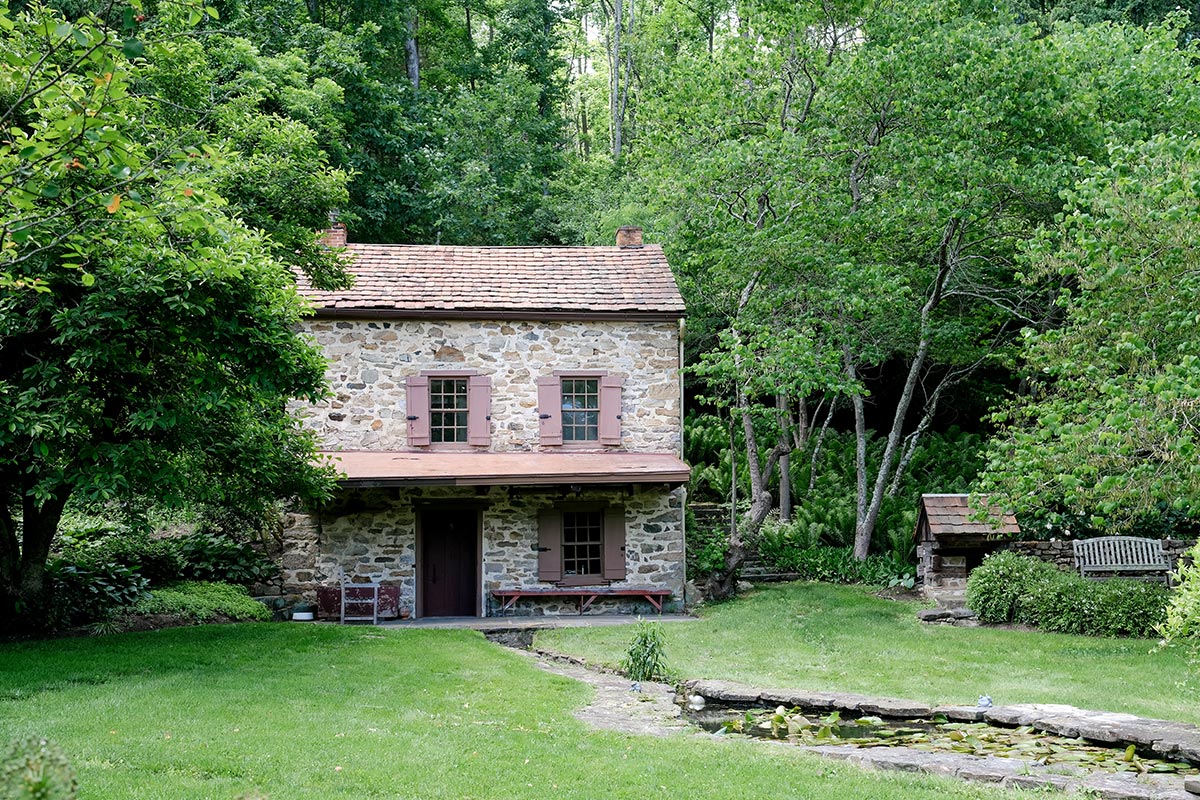
Nana-Sinkam's passion for the history of this place, for the land, for healing, comes from deep within, like the streaming water in the springhouse. It's likely the seed of Bloom Farm was planted long before the pandemic.
In his youth in sub-Saharan Africa, NanaSinkam watched his father, who worked for the United Nations, build food systems. After political turmoil sent the family back to the United States, they moved to his mother's childhood home, Lancaster, where he absorbed a different kind of farming.
So establishing Bloom Farm is returning to the land for Nana-Sinkam. It represents caring about where his food comes from and “being thoughtful about what I'm eating,” he says.
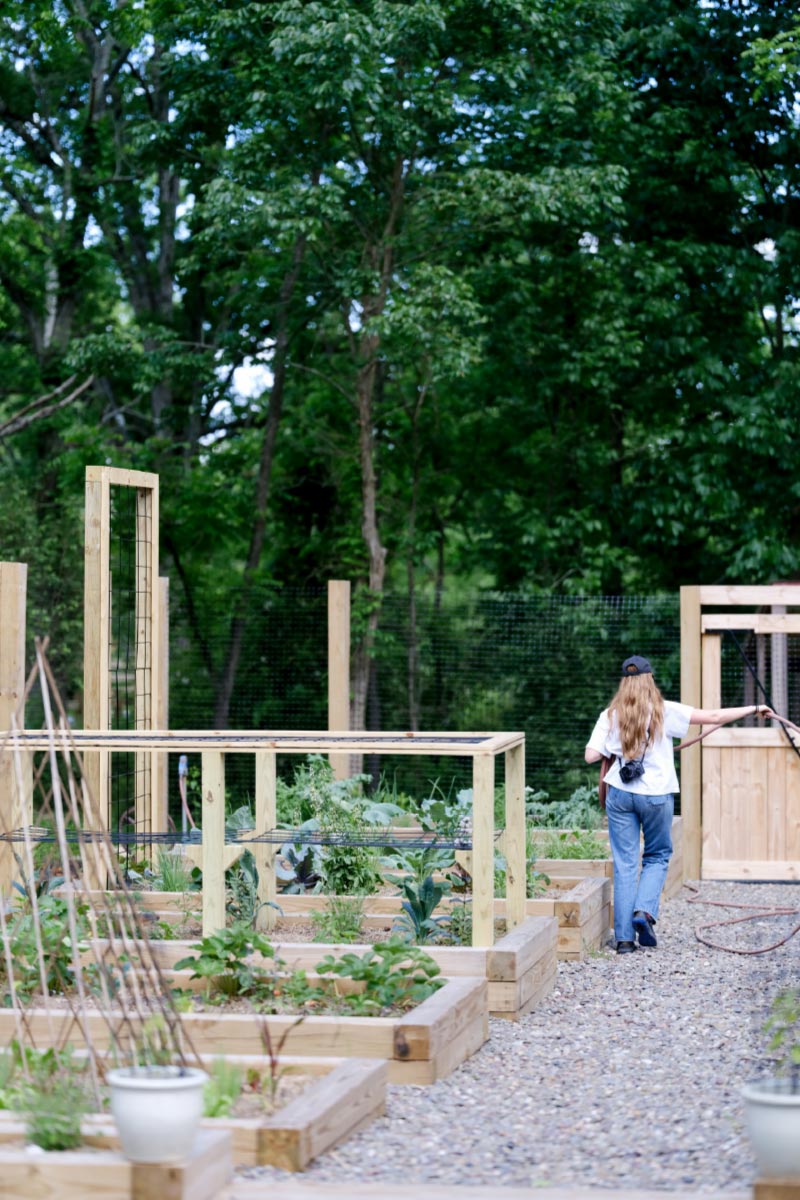
It's also about reaping relationships as well as crop harvests. It's rooted deeply in family, connecting him to his past family and the new one he's building. The name comes from his wife's birth name, and he feels a lot of connection to his parents through the farm. Nana-Sinkam says it's “joyful” to be working with his younger brother, who is part of the venture, and he's especially thrilled to see his three young children at the farm with their imaginations “going wild.”
He believes these family values will shine through what the farm offers in terms of product as well as experiences. Visitors will bring their families, and the farm will realize his vision of it as a “next-generation community space.”
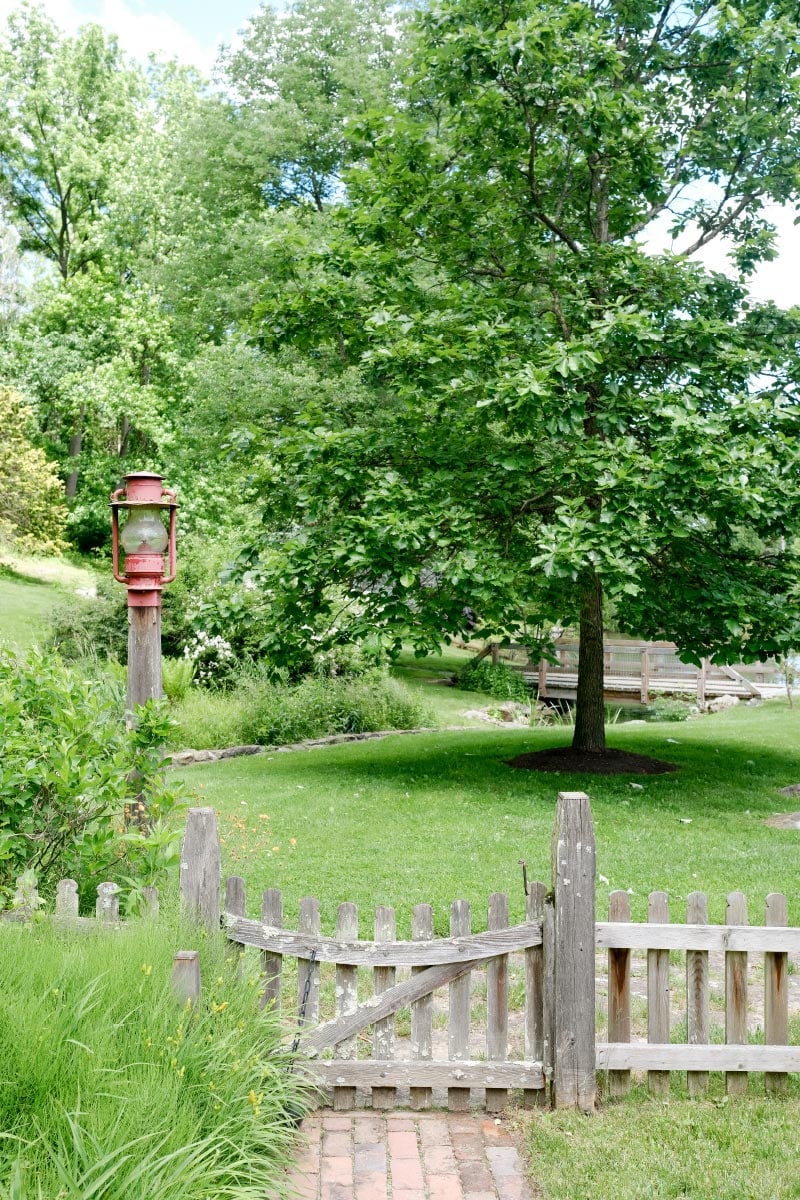
He hopes people visit to mark life events, reunite friends and family, and reconnect with themselves and others. “I hope it's a beacon for that,” he says. He wants the farm to become a sanctuary people seek when they are in grief or pain and need a place to heal. “I feel a deep connection to this area spiritually,” he says, and he wants to share that connection.
History has layers, says Nana-Sinkam: each of us puts our own layer on top of what's gone before, and the layers stream through time like the water in the springhouse, fusing into one thread carrying the past into the future. Bloom Farm's regenerative, healing practices are bringing the farm's past glories into the present in sustainable ways that ensure the life force continues to thread itself through this land and the people who care for it. And that's the layer Nana-Sinkam is adding to the history of this place.
Experience Bloom Farm
223 Lobachsville Rd., Oley | Bloomfarm.com
RSVP for the following events at Bloom Farm's website on the “Experiences” page:
Weekly Community Yoga
Donation-based, Wednesdays, 6–7 p.m.
Farm Tours With Sam Nana-Sinkam
Monthly on the first Wednesday, 3 p.m.
October Katonah Yoga Retreat
Oct. 18–21
Chestnut Festival
Oct. 25: food, drink, music, activities, roasted chestnuts, chestnut crepes made with chestnut flour, and other chestnutinspired delicacies! Free for children under 12 and Oley residents.
For upcoming dinner experiences with guest chefs, family days, foraging experiences and more, also check the website's “Experiences” page.
Farm spaces—farmhouse (with pizza oven and fire pit), wine cellar, wellness studio and rustic art barn—are available for private bookings and group experiences such as scenic photo shoots, personal or corporate retreats, or hosting meal events.
For more information, email hello@bloomfarm.com.
Published as “Bloom Farm: History and Healing Converge in a Chestnut Tree Farm” in the August 2024 edition of Lehigh Valley Style magazine.















